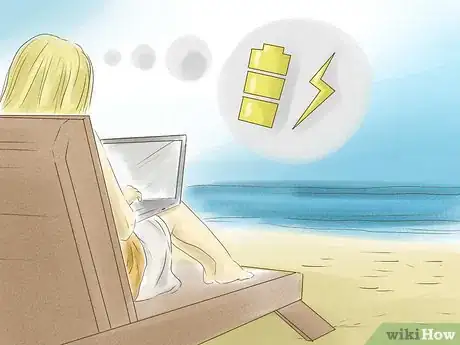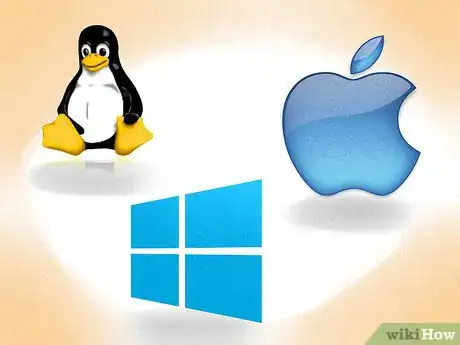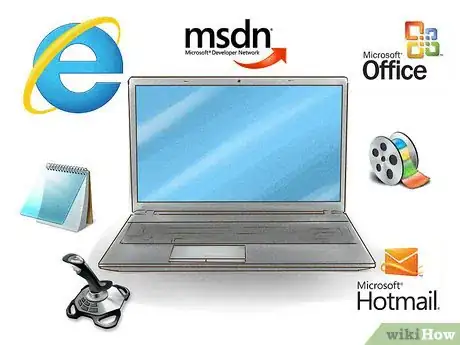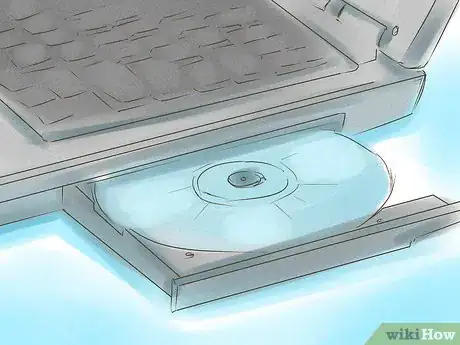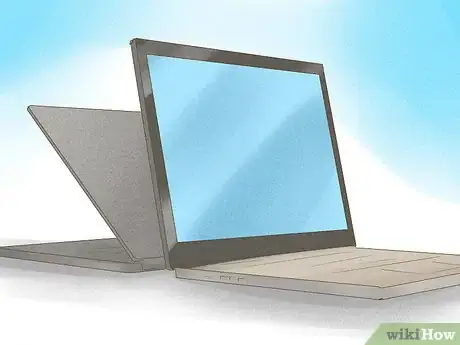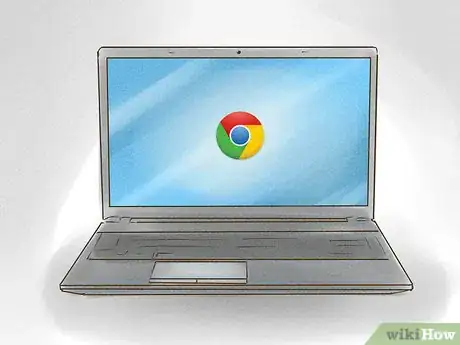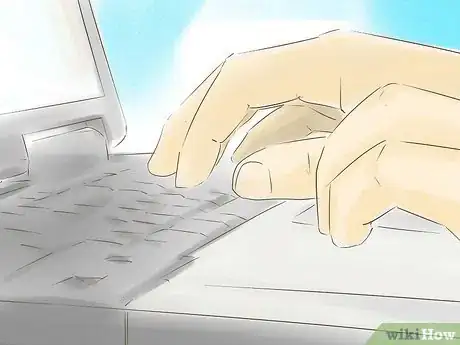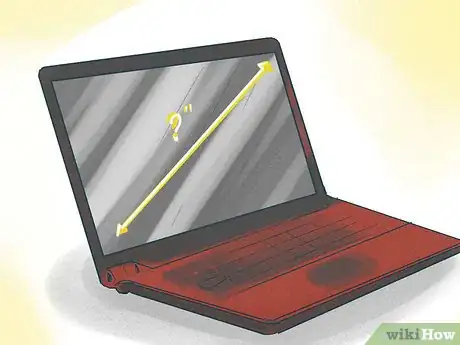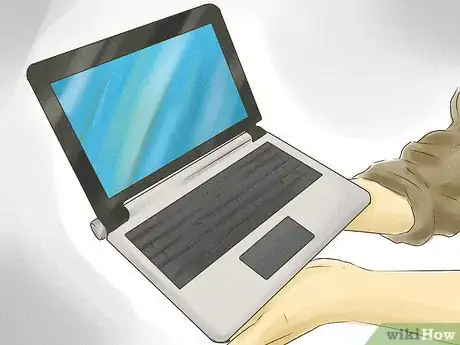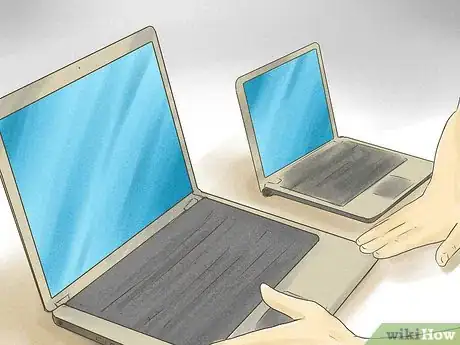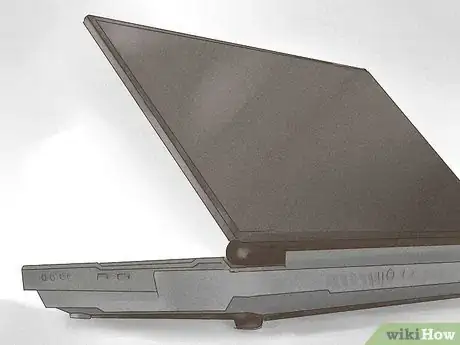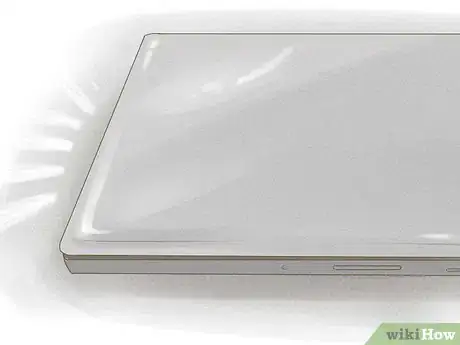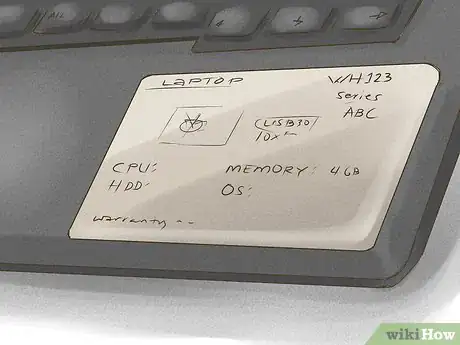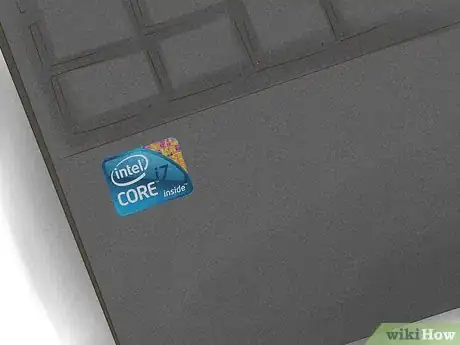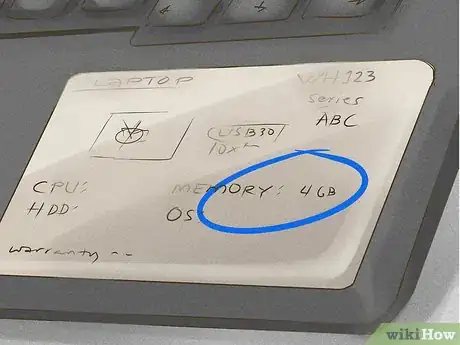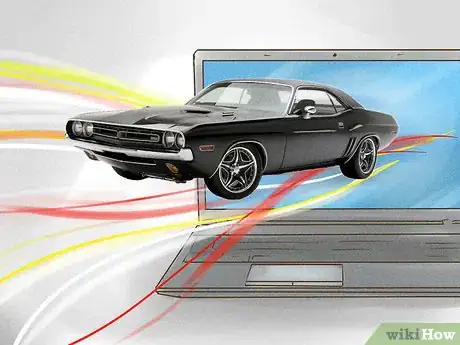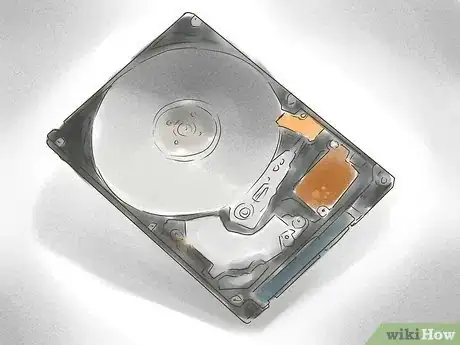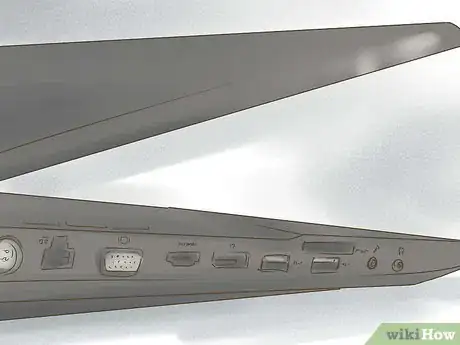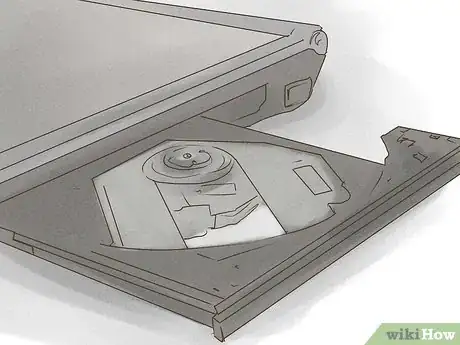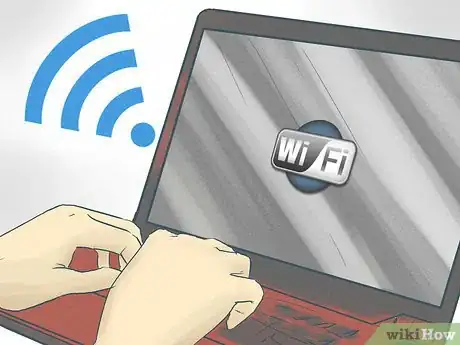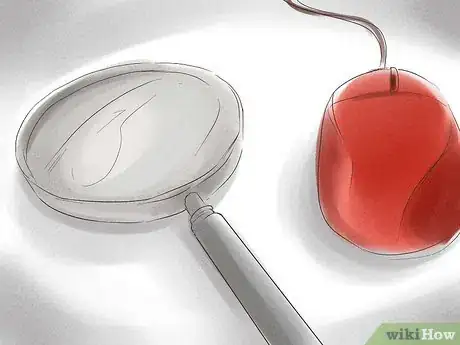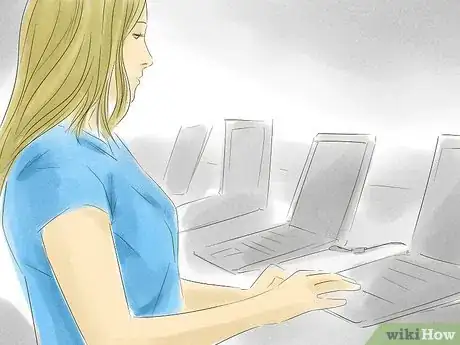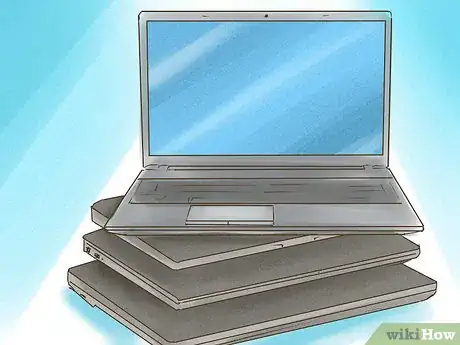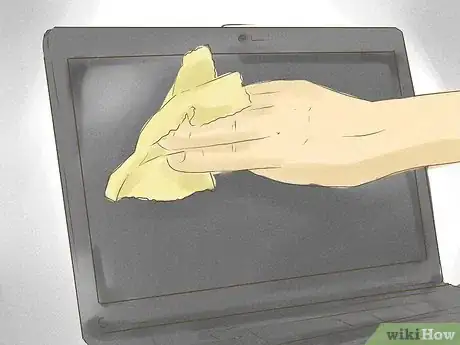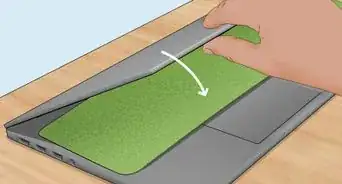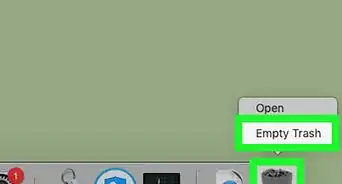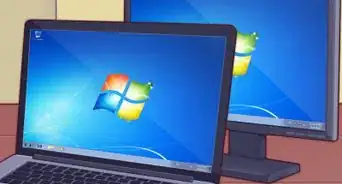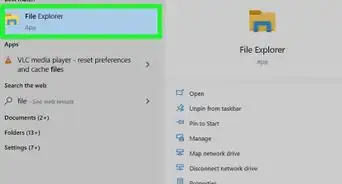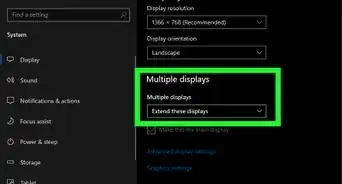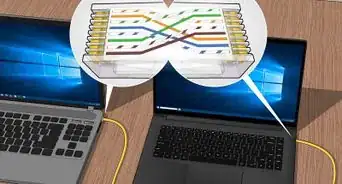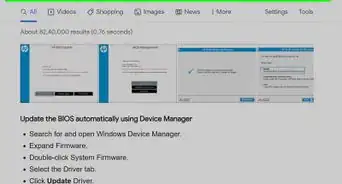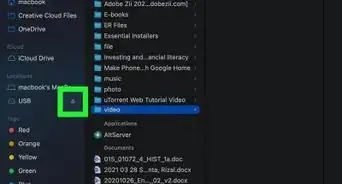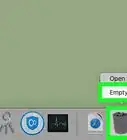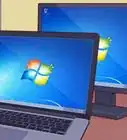wikiHow is a “wiki,” similar to Wikipedia, which means that many of our articles are co-written by multiple authors. To create this article, 69 people, some anonymous, worked to edit and improve it over time.
wikiHow marks an article as reader-approved once it receives enough positive feedback. In this case, 84% of readers who voted found the article helpful, earning it our reader-approved status.
This article has been viewed 328,553 times.
Learn more...
The laptop market has changed a lot over the last decade. No longer confined to the business world, laptops have become ubiquitous at school and at home. You can replace your desktop with a laptop, use it to watch movies in bed, or take it on the road to do homework at a friend’s house. The sheer number of choices when it comes to buying a laptop can be a little staggering, especially for new buyers. Armed with a little bit of research and knowledge, though, you’ll be able to buy with confidence and pick the best laptop for your needs.
Steps
Determining What You Need
-
1Consider the advantages of a laptop. If you haven't had a laptop before, it can be a good idea to consider the possible benefits of owning one. When compared with a desktop, laptops have quite a few advantages.
- You can take a laptop with you wherever you go, even abroad provided that you take a power adapter as well.
- Many laptops can do what we expect most desktops to do. For example, the i series are very fast workers with highest performance. Today, i7 is the most powerful type of computer. While you may not be able to run the latest games at their highest settings, most modern laptops are quite capable for all different tasks.
- Laptops save on space and are easy to move out of the way. This makes them great for small apartments, or for using on your bedroom desk.
-
2Keep the negatives in mind. While laptops are great for portable computing, there are a few significant drawbacks. While these shouldn’t scare you away if you really want one, they are good to keep in the back of your mind while shopping.
- Laptops are easy to steal if you forget to take care when traveling with them.
- Their battery life isn't extraordinarily long and can be frustrating if you want to work without electricity for a long period of time, such as on a plane or sitting at the shore near your vacation cottage. If you plan on traveling a lot, battery life will be very important to you.
- Because laptops typically can’t be upgraded like a desktop can, they can become obsolete quicker. This may mean you find yourself upgrading to a new laptop again in a few years.
Advertisement -
3Think about what you’ll be using it for. Since laptops have such a wide variety of uses, it will help to focus on what you plan to use the laptop for when you’re comparing models. If you plan on mainly browsing the web and writing emails, you’ll have a lot different needs than if you want to play games on the go or produce your own music.
-
4Set your budget. It's important to know how much your budget is before you start looking or you might be swayed by long-term interest-free sweeteners to purchase something beyond your means. There is a large range of laptops available and setting a limit will ensure that you enjoy the laptop you can afford, without being prevented from upgrading later on because you're still paying off the old one! Decide what aspects are important to you and fit these within your budget.
Windows, Mac, or Linux?
-
1Know what your options are. The two main options are Windows and Mac, along with Linux for the more tech-savvy. A lot of the choice will come down to personal preference and what you’re familiar with, but there are some important things to take into consideration.
- Go with what you know. If you're used to one OS it'll be easier to continue with a familiar interface than give something new/fresh a chance. But don't let your first OS decide every subsequent OS and computer you buy.
-
2Consider what programs you need. If you use a lot of Microsoft Office products, you’ll find the best compatibility with a Windows computer. This doesn’t mean you can’t use on the other operating systems, there’ll just be a few more hoops you’ll have to jump through. Conversely, if you’re doing music production or photo editing, you’ll find the most powerful programs on a Mac.
- Windows supports the most video games by far, though support for both Mac and Linux is increasing.
- If you are inexperienced with computers and will need help, buy the type of computer that helpful family members or friends know and will help you with. Otherwise you'll have to rely on call-center 'tech support'.
-
3Think about Linux. Some laptops can be purchased with Linux pre-installed. You can try Linux on your current machine by using a LiveCD. This allows you to run the Linux operating system without having to install it on your computer.
- Most Linux operating systems are free of charge as are thousands of programs and apps. A program named WINE lets you run many Windows programs on Linux systems. You can install and run these applications just like you would in Windows. WINE is still under active development, so not every program works yet. However, there are several million people using WINE to run their Windows software on Linux operating systems.
- Linux has virtually no threats from viruses. Linux is the perfect choice for children because the operating system is free, the programs are free, and there is virtually no threat of viruses. If the kids mess the operating system up just reinstall the operating system and start over fresh. Linux Mint looks and works the most like Windows. Ubuntu Linux is the most popular.
- Linux requires the most technical experience to get the most out of it. You will need to be familiar with command lines, but almost everything you need to know can be looked up online.
- Not all hardware is compatible with Linux, and you may have difficulty finding drivers that work.
-
4Know the advantages and disadvantages of a Mac. Mac computers are a fundamentally different experience than Windows computers, so if you’re making the transition it can be easy to get lost. Mac touts a very user-friendly interface, and is a powerful media production operating system.
- Macs connect seamlessly with iPhones, iPods, iPads, and other Apple products. Apple Support is also very comprehensive for new Apple products.
- Macs are less prone to viruses than a Windows PC, but you still need to be wary.
- Windows can be emulated on a Mac computer using Boot Camp. You will need a valid copy of Windows to do this.
- Macs are typically higher-priced than their Windows or Linux counterparts.
-
5Look at modern Windows laptops. Windows netbooks/laptops can be quite affordable, and there are many options from a number of manufacturers to fit virtually every need or want. If you haven’t used Windows in a while, you’ll notice things look quite different now. Windows 8 has a Start screen not only with your programs, but also with "live tiles" such as the latest news and sports instead of the old Start menu. Internet Explorer 10 includes a feature that can scan a file for possible viruses and malware before a user downloads it.
- Unlike Macs, Windows machines are manufactured by a wide variety of companies. This means that the quality will vary from laptop to laptop. It's important to look at what each manufacturer offers in terms of price, features and support, and then to read reviews and other sources for information on how reliable the manufacturer's products are.
- Windows laptops usually offer many more customizable options over a Mac laptop.
-
6Take a look at a Chromebook. Besides the three main operating system choices, there are a few other options out there. One of the most popular, and growing, options is a Chromebook. These laptops run Google’s ChromeOS, which is completely different than any of the options above. These laptops are designed to be constantly connected to the internet, and come with subscriptions to online storage with Google Drive.
- There are only a few different models of Chromebook available. HP, Samsung, and Acer each make a budget model, while Google makes the more expensive Pixelbook.
- ChromeOS is designed to run Google web apps such as Chrome, Google Drive, Google Maps, and more. These laptops are best suited for users who are already heavy Google users.
- Chromebooks will not be able to run any programs designed for another operating system, including most games and productivity programs.
-
7Give them a test run. Try out as many different operating systems as you can in the store or on friends' computers. See what feels most innate and natural to your way of using a computer. Even within the same operating system, keyboards, track pads, etc., can feel very different under your personal touch.
Finding a Form Factor
-
1Think about the size of laptop that will suit you best. There are three different size/weight ranges for a laptop: a netbook, a laptop, or desktop replacement. Although all of these fall into the broader concept of a "laptop", their end usability differs and can impact your choice.
- There are several important things to consider when it comes to laptop size: Weight, screen size, keyboard layout, performance, and battery life. You will typically find netbooks to be the cheapest yet smallest of the choices, while regular laptops will need to strike a balance between all of the factors that suits your needs.
- Portability is a major concern for laptops. Getting a larger screen will sacrifice weight and portability. Consider the size of your bag when looking at different laptops.
-
2Decide if you want a netbook. Netbooks, also known as a mini notebooks, ultrabooks, or ultraportables, are small laptops with a portable small screen of 7"-13"/17.79 centimeter (7.0 in)-33.3 centimeter (13.1 in). This has a compact size, is light in weight, and is usually suitable for emailing and browsing or light internet usage as their memory is small. Since netbooks tend not to have as much RAM as laptops, their ability to run sophisticated applications is limited.
- The keyboard for netbooks will be significantly different than that of a standard-sized laptop. Make sure to give it a try before committing, because typing will feel odd for a while.
- Many tablet hybrids are now available. These come with detachable or flip-over keyboards, and usually have a touch screen. Consider these if you find yourself needing a tablet but can’t afford an iPad.
-
3Look at the standard laptops. These have a screen size of 13"-15"/33.3 centimeter (13.1 in)-38.1 centimeter (15.0 in). They are of medium weight, thin and light, and are able to hold a lot of memory. The decisions to make about a laptop's capacity really come down to your own preference as to screen size, and the amount of RAM you think you'll need (See next section).
- Laptops come in all shapes and sizes. As technology improves, they are becoming slimmer and lighter. You will find that Mac laptops don’t necessarily match up to these size descriptions. If you have decide on a Mac, consider your portability needs when looking at different models.
-
4Consider a desktop replacement laptop. These have a screen size of 17"-20"/43.8 centimeter (17.2 in)-50.8 centimeter (20.0 in). These are larger and heavier, have full features, and tend to be bound for the desk rather than being lugged around in your backpack. While not as portable as the other two, it's still very mobile when needed and the added weight when carrying it isn't really a big issue for many people. If you're not sure about this size, weigh up your desk and portable needs.
- Some desktop replacement laptops have the ability to upgrade to a limited extent, allowing you to install a new video card.
- These laptops are the most suitable for gaming enthusiasts.
- Larger laptops will typically have a much shorter battery life, especially if you are running intensive programs such as video games or graphic development.
-
5Consider your durability needs. Decide on whether you'd prefer a metal or plastic exterior. Nowadays the choice of casing is mostly an issue of personal preference, as the weight of each outer-casing is fairly similar, with well-made metallic laptops being no heavier than plastic ones. In terms of durability, metallic casing is probably best for a laptop liable to get knocked around a bit but it's still best to ask your retailer for advice.
- If you are doing fieldwork or a lot of "rough travel" with a laptop, you might need customized extras to protect it. Ask for a stronger screen, shock mounting of internal components, and protection against water and dirt.
- If you are a professional in the field and you really need it to last then there is a class of laptops called Toughbooks, which tend to be quite expensive, but you can run them over with a truck or bake them in the oven without damaging them.
- Most consumer model laptops in retail showrooms are not built for durability. Look for a corporate model laptop built from metal or composite materials if durability matters.
-
6Keep style in mind. Laptops by their nature are very public devices. Much like watches, purses, sunglasses, or any other accessory, laptops have style. Make sure the laptop you want isn’t one that you would consider ugly, or you might be less likely to use it on the go.[1]
Checking the Specs
-
1Take a long look at each laptop’s technical specs. When you buy a laptop, you are typically stuck with the hardware that’s inside. This means that you want to be extra sure that the laptop has the specifications that you need.
-
2Check the Central Processing Unit (CPU). Higher end, faster processing laptops will have a multi-core CPU such as Intel, AMD, and now ARM. These won't usually be found in netbooks or lower-end laptops. The difference impacts the speed of your laptop's performance.
- As technology moves forward, older processors quickly get left in the dust. If you’re buying Intel, avoid Celeron, Atom, and Pentium chips, as these are all older and slower models. Instead, look for the Core i3, i5, 17, or i9 CPUs. If you are buying AMD, avoid the C- or E-series processors and instead look for the A6 or A8 CPUs.[2]
-
3Look at the amount of Memory (RAM). Consider how much RAM you actually will need in your new unit. The amount of RAM memory can be an important spec to consider. Often the amount of memory can limit the applications that you can run. Large applications will require more memory to run. In general, the more memory you have, the faster the laptop will run.
- Most standard laptops typically come with 4 gigabytes (GB) of RAM. This is usually sufficient for most users. Netbooks may come with as little as 512 megabytes (MB), but this is becoming less common. You can find laptops with 16 GB or more, though this is only recommended if you are running multiple memory-intensive programs.
- While it may be tempting to get a whole ton of RAM when you purchase the laptop, often retailers will put massive amounts of RAM in a unit to disguise the fact that the rest of the components are sub-par (slower processor, etc.). Since it is quite easy to upgrade RAM, this should not be a huge consideration for a specific laptop.
-
4Check the graphics capabilities. If you are playing games, check the graphics memory. You should have a graphics card with discrete video memory for 3D games, though this is not necessary for most casual games. A discrete graphics card will consume more battery power as well.
-
5Look at the available storage space. The listed size of the hard drive will be a little misleading, since it does not take into account the operating system and any pre-installed programs. Often, you will have about 40 GB less than the listed amount available.
- Alternatively, Solid State Drives (SSDs) offer much higher performance, no noise and extended battery life, but have much smaller capacities (usually 30GB to 256GB at the time of writing) and cost more. If you are looking for the best possible performance, an SSD is a must, but you'll probably need to purchase an external hard drive for things like music, photo and video libraries.
-
6Check the available ports. How many USB ports are in place for adding your peripherals? If you plan on using a separate keyboard and mouse, you’ll need at least two spare USB ports. You’ll also need ports for printers, external drives, thumb drives, and more.
- If you want to connect your laptop to your TV, make sure that it has an HDMI port for the best possible connection. You can also use a VGA port or DVI port to connect to the TV.
-
7Check the laptop's optical drives. If you want to be able to burn CDs and install software from discs, you will need a DVD drive. If your laptop does not have one, you can always purchase an external DVD drive to plug in when needed. Blu-ray drives are also options now in many laptops. If you want to be able to play Blu-ray movies, make sure you choose a Blu-ray drive (sometimes called BD-ROM) instead of a DVD drive.
-
8Look for the right screen resolution. The higher your resolution, the more content you can fit on your screen. Images will be crisper on a higher resolution as well. Most mid-range laptops come with a resolution of 1366 x 768. If you are looking for a crisper picture, find a laptop with a 1600 x 900 or 1920 x 1080 display. These are often only available on the larger-sized laptops.[3]
- Ask how the laptop screen performs under sunlight; cheaper screens will often be "invisible" in outdoor light, making their "portability" a little less useful for you.
-
9Check the Wi-Fi capabilities. Your laptop should be Wi-Fi enabled. Virtually all laptops have wireless cards built-in, so this usually isn’t a concern anymore.
Going to the Store (or Website)
-
1Do your research. Whether you’re buying from a store or online, you’ll want to make sure you know as much as possible about the laptops you’re interested in or the specs you need. This will help you know what kind of deals you’re getting and will prevent you from being led astray by ill-informed salespeople.
- If you’re going into the store, have a printout of the laptop(s) you’re interested in, or have the information available on your phone. This will help you narrow the field and keep you focused on what you need.
-
2Find a suitable retailer for purchasing a laptop. There are a variety of places you can purchase laptops from these days. From big box stores to mom-and-pop computer shops, or from Craigslist to Amazon, there are a huge number of outlets available, all offering different prices and levels of service.
- The big stores or specialized computer stores are the best way to try multiple laptops before you buy them. If you’re planning to buy online, go down to your local computer/electronics store and try out a few different models, and then take your notes back home.
-
3Check the warranty. Almost all laptop manufacturers offer a warranty for their products. This warranty may vary, and some stores will offer additional warranty coverage for more money. On the flip side, if you’re buying used off of Craigslist, it’s highly likely that the laptop is no longer covered.
-
4Know the risks before you buy used, re-certified, or refurbished laptops. It is very important that the laptop comes with a good warranty and from a reputable dealer. Durable, corporate grade laptops can be a bargain when refurbished. The risk is that the laptop has been mistreated and is in poor condition. If the price is right, and especially if there is a one-year warranty, then the risk may be negligible.
- Don't buy discounted floor stock laptops unless they come with a good warranty from a reputable dealer. It’s likely that these have been powered up all day every day, as well as being exposed to store dust, grimy fingers, and endless pressing and banging from bored kids or confused customers.
-
5Take good care of your new laptop. While it depends on the brand and type of laptop, a laptop that is cared for well should last a good few years before you need to invest in another laptop. Taking the time to clean and maintain the laptop will keep it running smoothly for years.
Community Q&A
-
QuestionDo I need to buy a laptop that has Microsoft Office on it if I want it for email and Facebook?
 Community AnswerNo, if you don't need Microsoft Office, there's no need to buy a laptop with it. However, it can be convenient to have in case you need it sometime in the future; otherwise, you'd have to buy the program separately later.
Community AnswerNo, if you don't need Microsoft Office, there's no need to buy a laptop with it. However, it can be convenient to have in case you need it sometime in the future; otherwise, you'd have to buy the program separately later. -
QuestionWhich laptop is best for programming?
 Community AnswerLinux is usually the best brand, because it allows you to modify the laptop for what you need.
Community AnswerLinux is usually the best brand, because it allows you to modify the laptop for what you need. -
QuestionShould I buy a gaming laptop for college purposes?
 Community AnswerFor general college purposes, there is no need for a gaming laptop. Unless you plan on doing a lot of gaming in college.
Community AnswerFor general college purposes, there is no need for a gaming laptop. Unless you plan on doing a lot of gaming in college.
Warnings
- Most of the time the better deals are online.⧼thumbs_response⧽
- If you are buying used from an online auction site like eBay, read everything. See what is wrong with it. Review the person's feedback. If it isn't brand new, only buy it for a very good price, and make sure you do a clean install. You do not know what the previous owner may have on there and you are taking a risk buying a used laptop sight unseen. Make sure you can return it if something happens.⧼thumbs_response⧽
- Make sure you are comfortable with a laptop before you buy it. In most shops, if you bought a laptop and already used it, you won't get a refund or an exchange.⧼thumbs_response⧽
- Factory refurbished laptops direct from the manufacturers' websites are also generally inexpensive and come with warranties, but again your mileage may vary.⧼thumbs_response⧽
- If you do choose to buy online, you may have to pay shipping charges.⧼thumbs_response⧽
References
About This Article
If you want to buy a laptop, first decide which operating system you want to use. The most popular options are Windows and Mac. Typically, it’s best to go with whichever you’re more familiar with, as well as which system supports the programs you use. For instance, if you use Microsoft Office products frequently, you’ll probably prefer Windows, but if you need a laptop for video or music editing, you may prefer a Mac. However, there are other options that may work better for you, like Linux if you’re a computer programmer or ChromeOS if you use mostly Google products. Keep reading to learn how to choose the specific laptop model that’s right for you!

